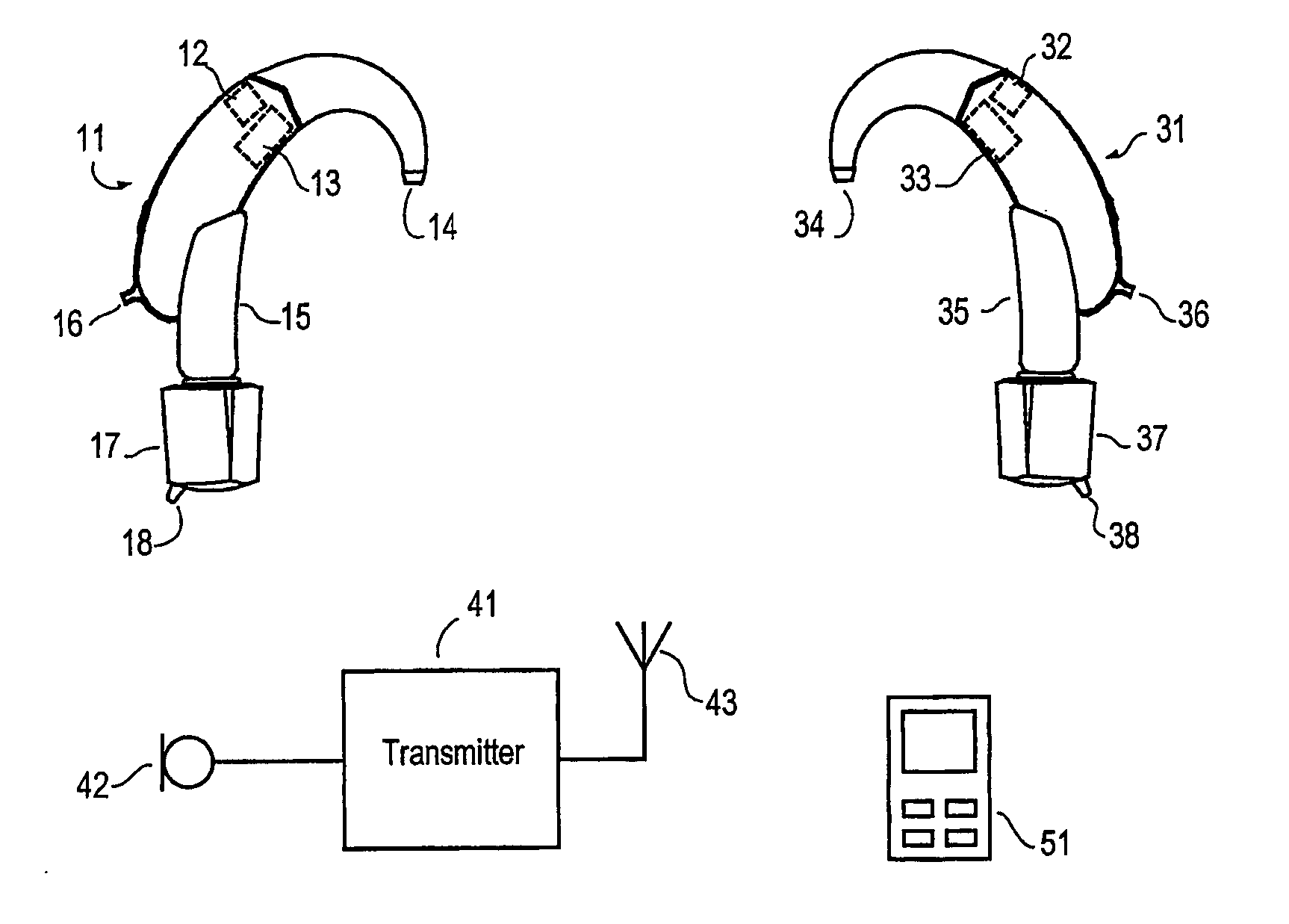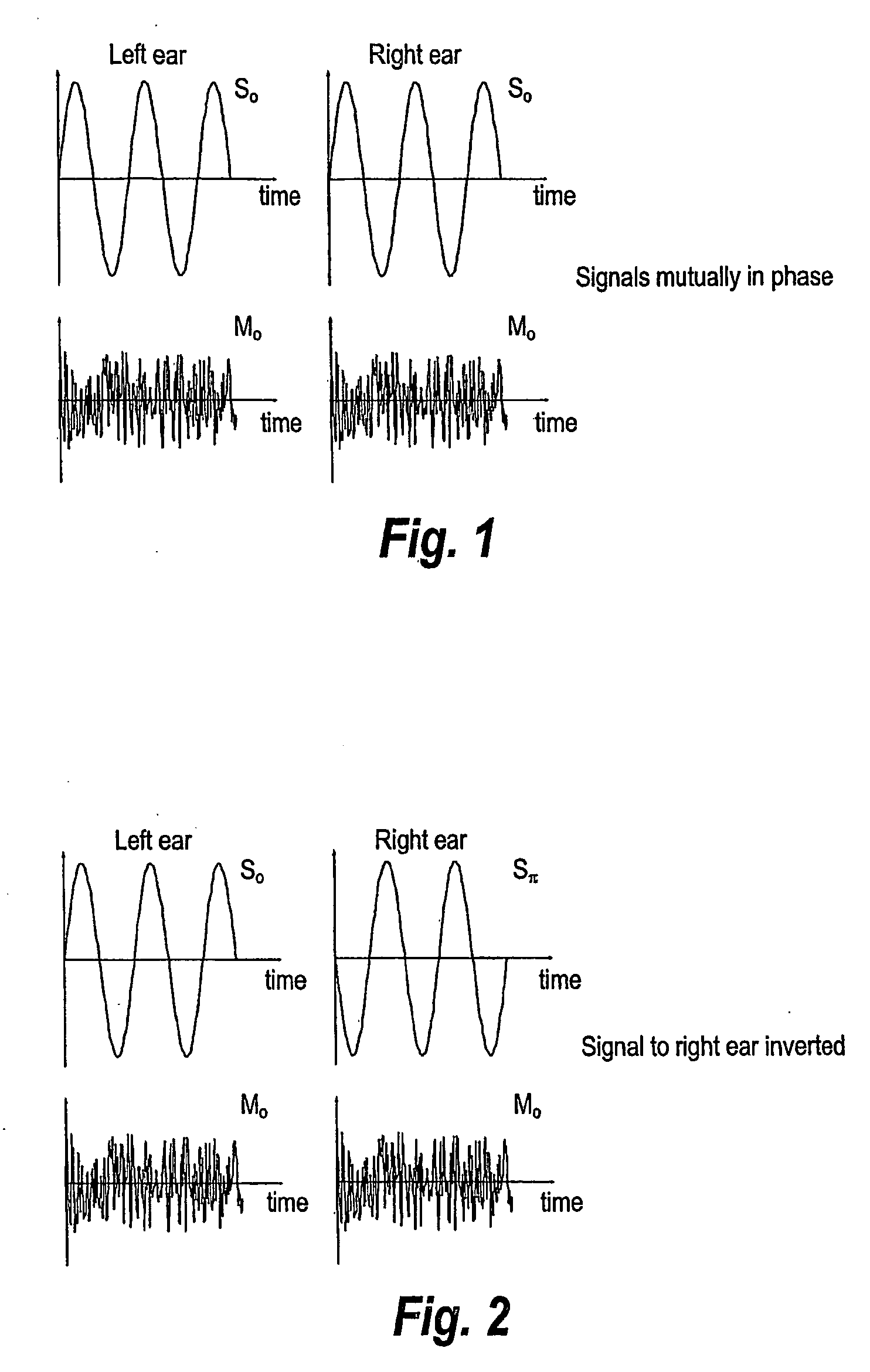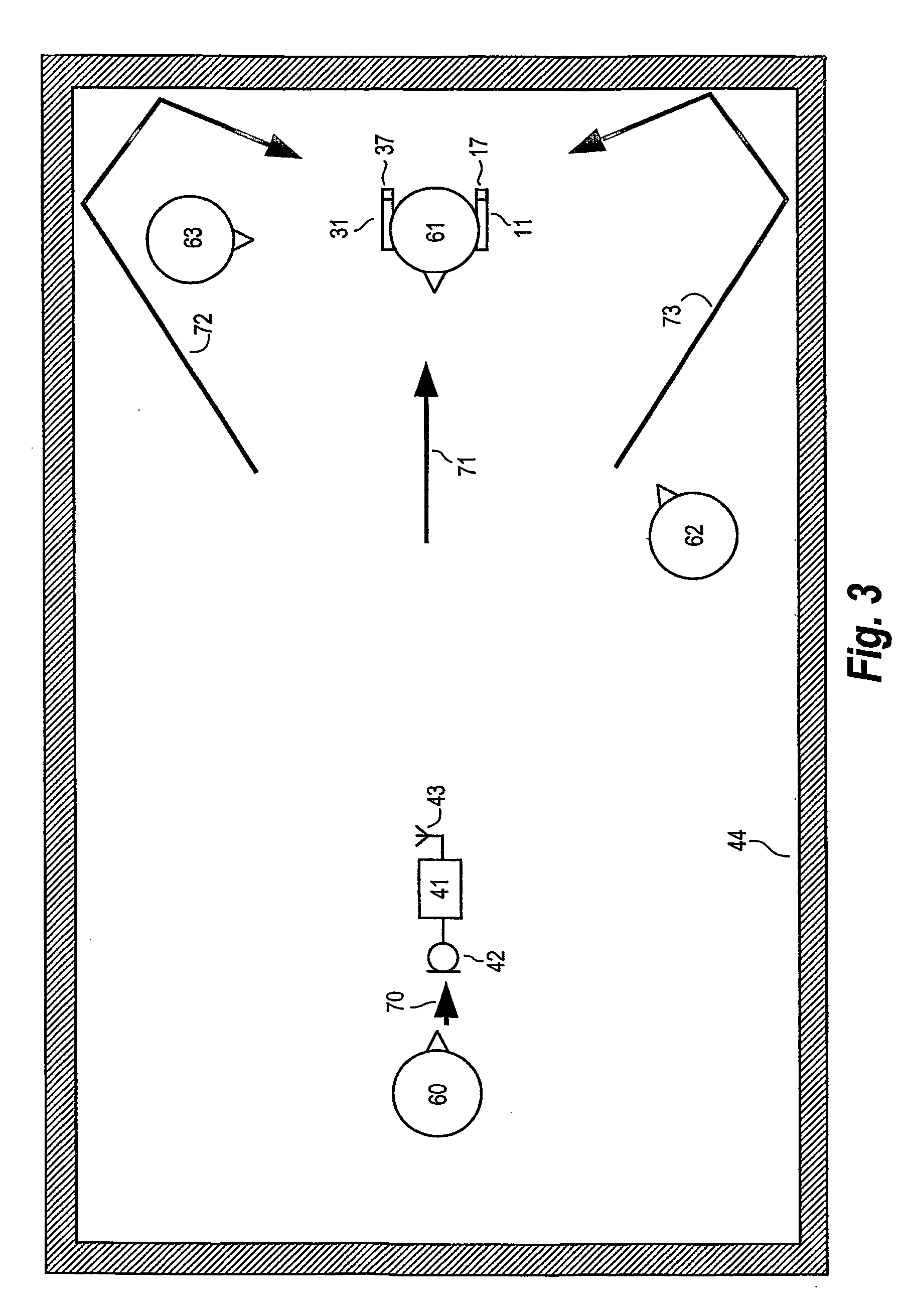Hearing aid system, a hearing aid and a method for processing audio signals
- Summary
- Abstract
- Description
- Claims
- Application Information
AI Technical Summary
Benefits of technology
Problems solved by technology
Method used
Image
Examples
Embodiment Construction
[0051] The relationship between signal and masker under binaural listening conditions is illustrated in FIGS. 1 and 2. FIG. 1 shows a signal S0 and a masker M0 presented to the right and left ears of a listener in the case where both the signals S0 and the masker M0 are mutually in phase in the two audio channels, M0S0.
[0052] In FIG. 2, both the signal and the masker are presented to the right and left ears of a listener in the case where the right signal is 180° out-of-phase with the left signal, and the masker is still in phase in both channels, SπM0. The result of this phase reversal is a release from masking of the signal presented to the listener, and an additional perceived improvement of up to 4-5 dB SNR.
[0053] A practical user situation is shown in FIG. 3, where a user 61 situated in a room 44 is wearing binaural hearing aids 11, 31 with wireless electronic receivers 17, 37. In the same room 44 an orator 60 situated some distance away from the user 61 is speaking into a mi...
PUM
 Login to View More
Login to View More Abstract
Description
Claims
Application Information
 Login to View More
Login to View More - R&D
- Intellectual Property
- Life Sciences
- Materials
- Tech Scout
- Unparalleled Data Quality
- Higher Quality Content
- 60% Fewer Hallucinations
Browse by: Latest US Patents, China's latest patents, Technical Efficacy Thesaurus, Application Domain, Technology Topic, Popular Technical Reports.
© 2025 PatSnap. All rights reserved.Legal|Privacy policy|Modern Slavery Act Transparency Statement|Sitemap|About US| Contact US: help@patsnap.com



